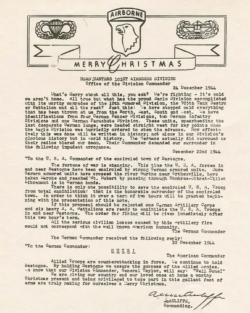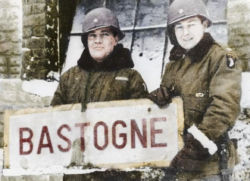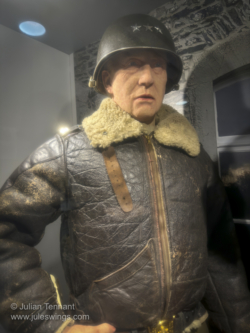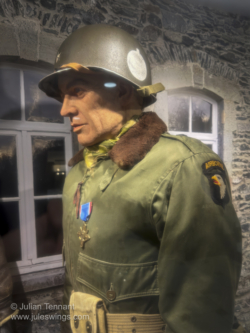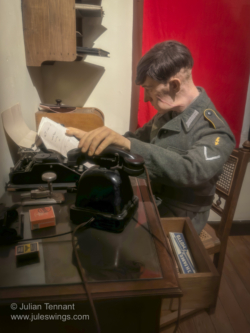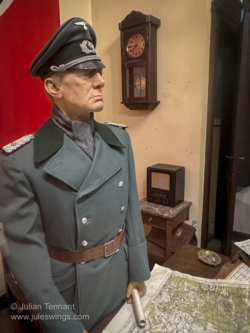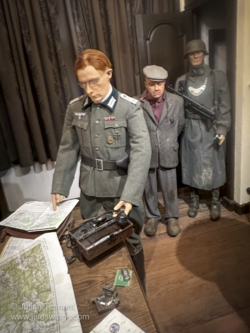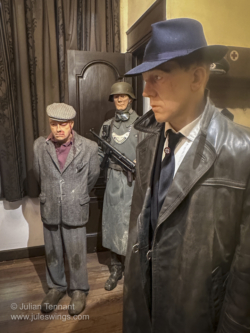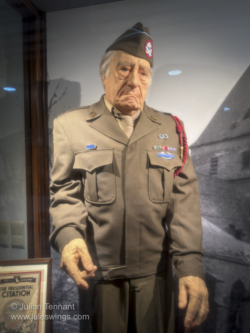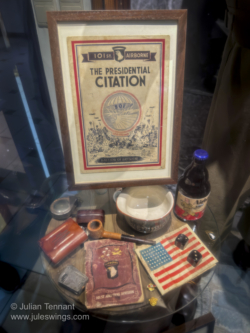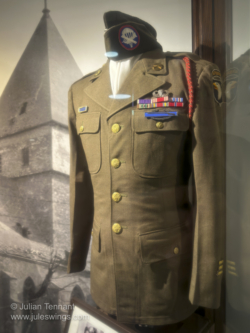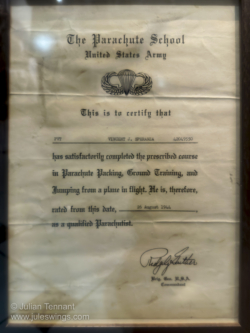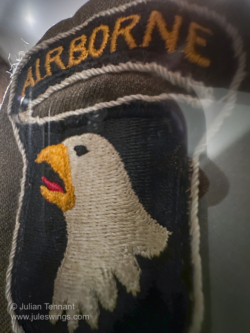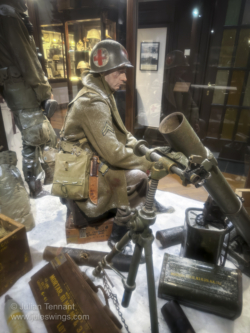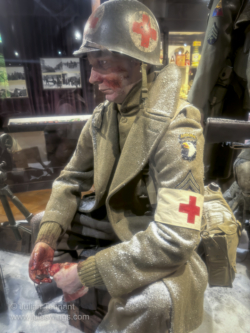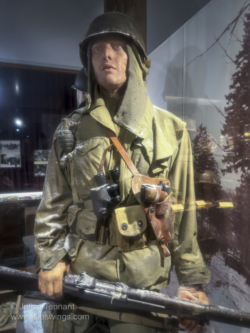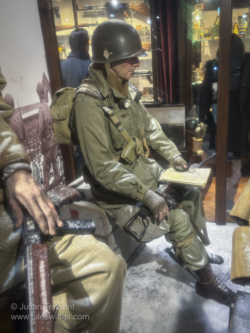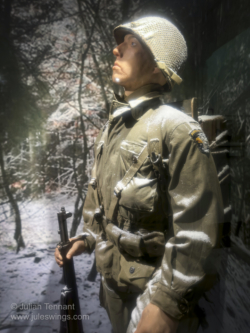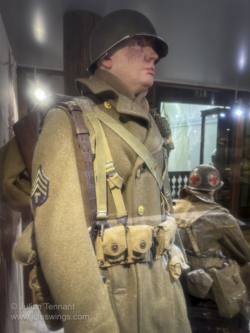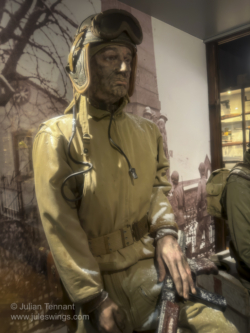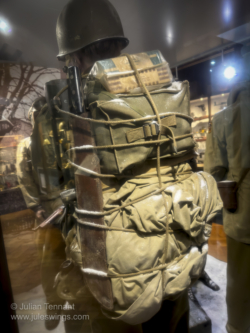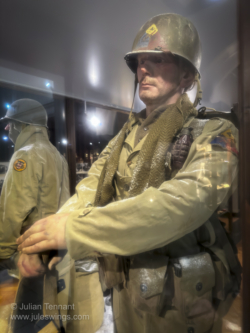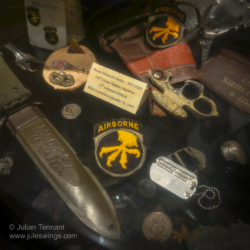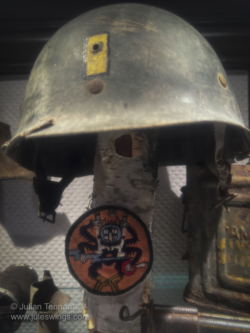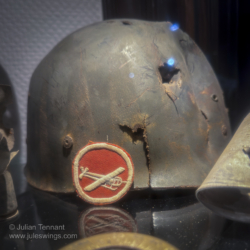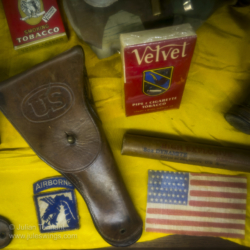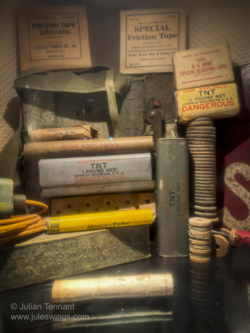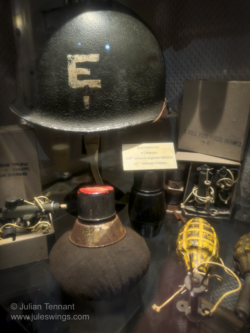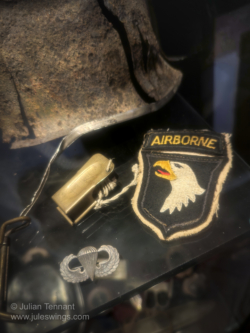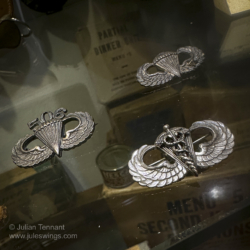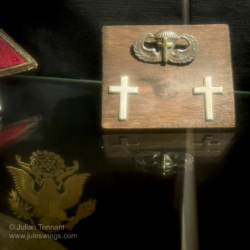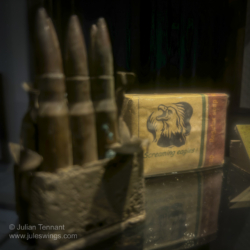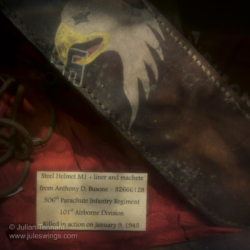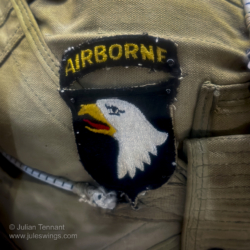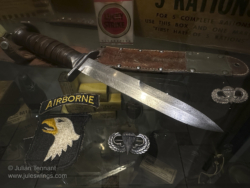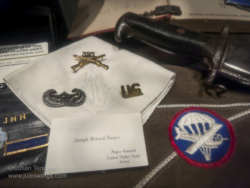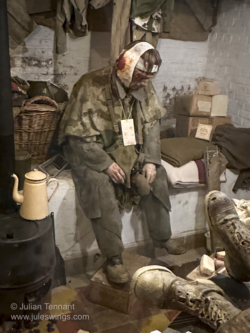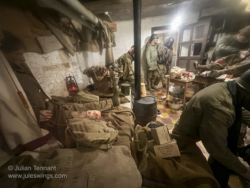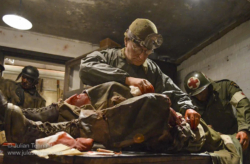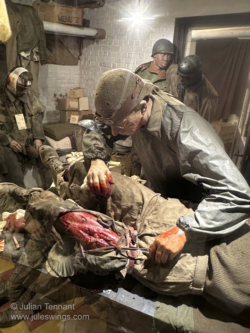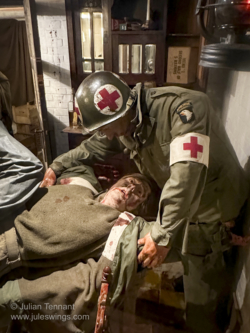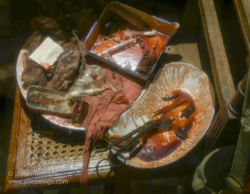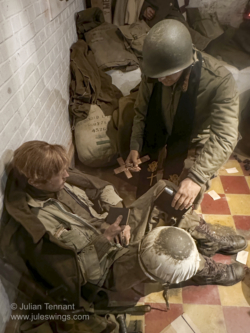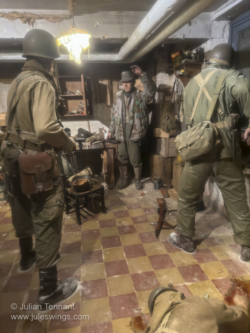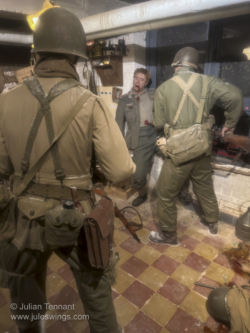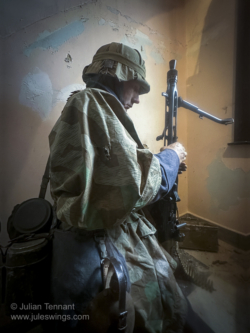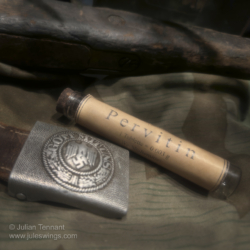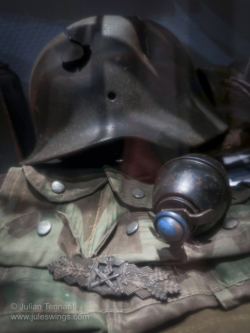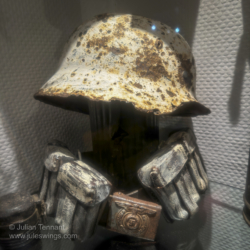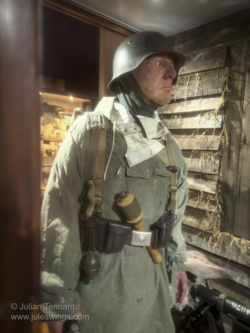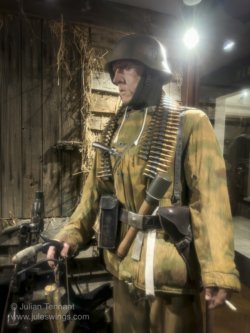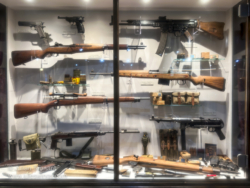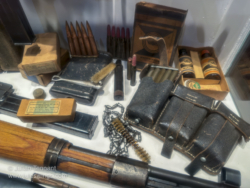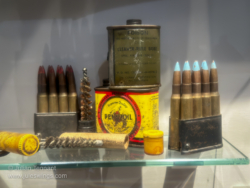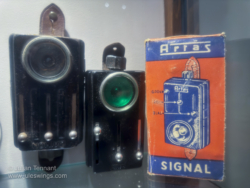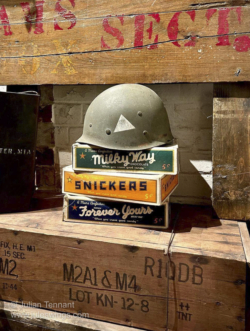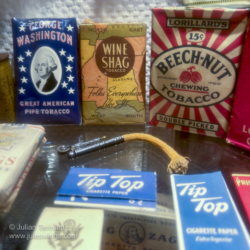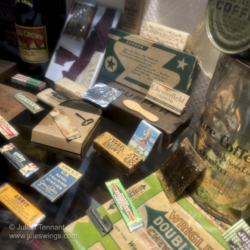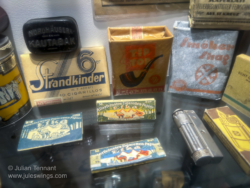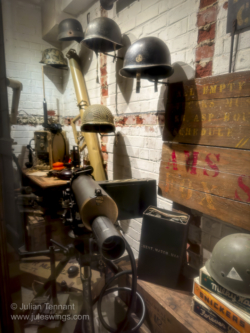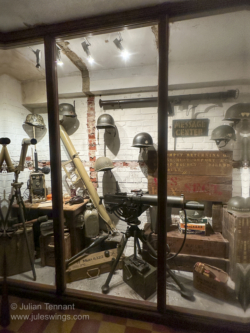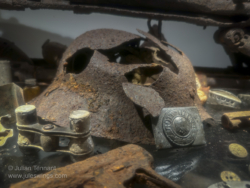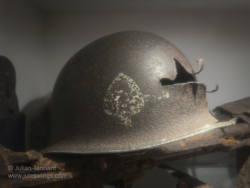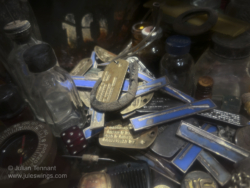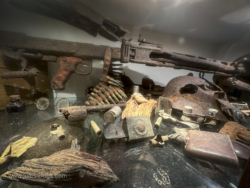The 101st Airborne Museum Bastogne – Belgium

Bastogne, in the Ardennes region of Belgium is home to several significant war museums. One of the best is the 101st Airborne Museum Bastogne which focuses on the paratroopers defence of the town during the final German offensive in December 1944.

Background: The Ardennes Offensive and Battle of the Bulge
On December 16, 1944, the Germans launched Operation Watch on the Rhine, a desperate counteroffensive on the Western Front. Facing pressure from the Red Army in the East and the Western Allies on the German border, the German Army aimed to eliminate American and British forces and split them, seeking a separate peace before turning to face the advancing Red Army. Despite expecting a swift advance through the Ardennes, similar to their 1940 invasion of France, the Germans faced challenges such as difficult terrain, logistical issues, and resilient American resistance, causing delays.
These delays allowed the Allies to mobilize and counter the German offensive. On December 17, the 101st Airborne Division received orders to secure the vital town of Bastogne, traveling over 100 miles in open-air trucks. Despite heavy losses, units like CCB, 10th Armoured Division, delayed the Germans, enabling the 101st Airborne to establish a perimeter around Bastogne just ahead of German forces.
The Germans launched repeated but uncoordinated assaults on Bastogne over the following days. The 101st Airborne Division’s commander, Major General Maxwell D. Taylor was in the USA at the time of the attack. Command of the 101st and its attached troops fell to Brigadier General Anthony McAuliffe. General McAuliffe had been the divisions artillery commander when he parachuted into Normandy on D-Day. He coordinated the 101st’s artillery and effectively repelled the attacks. In a moment of desperation, the Germans sent a surrender ultimatum, to which McAuliffe famously replied, “NUTS!”
While initially critical, the situation in Bastogne improved when Patton’s Third Army made contact on December 26, breaking the encirclement. The 101st began receiving crucial resupply, and the wounded could be evacuated. Despite no longer being surrounded, the battle continued as the 101st participated in the offensive to push the Germans back, recapturing villages like Foy and Noville. The division’s resilience frustrated German plans and contributed to preventing them from achieving their objectives. The 101st suffered significant casualties, but their tenacity played a crucial role in the defence of Bastogne.

The Museum
Situated in the former Officer’s Mess of the 2ème Régiment de Chasseurs Ardennais in Bastogne, the 101st Airborne Museum spans four floors, offering a comprehensive overview of the conflict around Bastogne during the winter of 1944-45.


As the name suggests, the museum predominantly focuses on the activities of the 101st Airborne Division, immortalized in the renowned Steven Spielberg Band of Brothers television series.
The occupation of Bastogne by the Germans prior to its capture by the Americans is mainly confined to a single room that is presented to visitors as “September 2, 1944 – At the Kommandantur of Bastogne, the Germans are nervous. The Allied forces are advancing rapidly and members of the resistance are committing more and more acts of sabotage. Close to the railroad, a person has been arrested by a German patrol. Roughly treated by the German soldiers who captured him, the alleged member of the Resistance is presented to a superior officer before being interrogated by the Gestapo.“




The mannequins used to display the uniforms in the museum are superb as can be seen above. It was recreated from a photograph featuring Technician Milford Sillard talking to Private Davies in front of the Hotel Lebrun, when the Commander of Combat Command B/ 10th Armoured Division, Colonel William Roberts has installed his HQ. Milford and Davies belonged to the 110th Infantry Regiment / 28th Infantry Division ‘Keystone’. They fought bravely on the Our front but were overrun by the German advance. Both managed to escape and join the airborne forces at Bastogne on 19 December where along with other infantrymen were regrouped to form the ‘Snafu Team’.
Many of the exhibits are not merely ‘representative’ but feature veteran donated items. For collectors this is a treasure trove of insignia, mementos and personalised kit.


Finding the right balance between preserving artifacts and educating visitors about their historical importance is always a challenge for curators. The 101st Airborne Museum has got the balance right. The dioramas are detailed and tell their stories in a raw, unsanitised way, leaving visitors with no illusion about the horror of the experience.

Another room features two American paratroopers of the 17th Airborne Division taking German soldiers by surprise. With bodies sprawled around, one German is being bayoneted whilst the other looks stunned by what has just occurred.




Over the post-war years, the museum has evolved into a central hub for veterans and their families. This has led to numerous veteran donations that enrich the battle’s story in a way not found in many other war museums. When combined with the vivid reconstructions and other exhibits, these donations contribute to an immersive educational experience, avoiding the pitfalls of excessive ‘bells & whistles’ interactive entertainments prevalent in many museums today. Along with the D-Day Experience and Airborne Museum, both in Normandy, the 101st Airborne Museum is an absolute ‘must-see’ for any collector of airborne forces militaria. Highly recommended.
101st Airborne Museum Bastogne Visitor Information
Address & Contact
Avenue de la Gare 13 -6600
Bastogne – Belgium
Web: https://www.101airbornemuseumbastogne.com/en/
Email: info@101airbornemuseumbastogne.com
Phone: 0032 (0) 61 50 1200
Opening hours
10:00 – 17:00 Wednesday – Sunday
Closed Mondays (and Tuesdays from 01 October to 31 March)


